
December 6, 2020—
Japan’s asteroid explorer Hayabusa2, on a voyage in space, has sent a capsule to Earth containing samples of sand and stones collected from the asteroid Ryugu. This is the first time that sand and stones have been successfully collected from below the ground and not just the surface of an asteroid. The capsule, which is filled with the passion and sentiment of so many people, might contain clues to understanding the origins of our solar system and life on Earth.
In June 2021, six teams began the initial analysis of Ryugu. HORIBA has been participating in this analysis as a part of the the Chemical Analysis Team.
Using “analysis” technology, we are closing in on the mysteries of the universe.
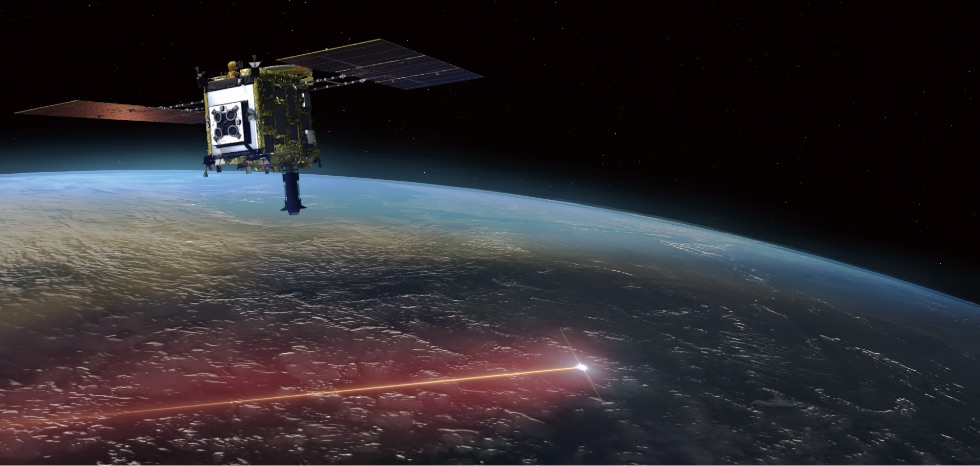
Image of Hayabusa2 which returned to Earth and detached re-entry capsule ©JAXA
The main objective of the Hayabusa2 Project was to bring back samples of sand and stone from the unexplored asteroid Ryugu, to help investigate the origins of the solar system, and life on Earth.
Hayabusa2 was developed as a successor to Hayabusa, the first space probe to successfully bring back surface materials from the asteroid Itokawa. Thanks to the experience of Hayabusa, Hayabusa2 represents a substantial improvement over its predecessor. Its design enables more reliable sample return and additional features resulting from new engineering challenges, such as the collection of subsurface asteroid material samples.
Ryugu, the asteroid that explorer Hayabusa2 was designed to explore, is known as a C-type asteroid. It is thought to be a celestial body containing information about the birth of our solar system some 4.6 billion years ago.
On December 6, 2020, Hayabusa2 successfully brought back the sand and stone from Ryugu to Earth. By analyzing these samples, we may be able to unravel the mysteries of where the water and materials that endowed the Earth with life came from, and how the solar system was born.
Related information: JAXA website: Asteroid Explorer “Hayabusa2”
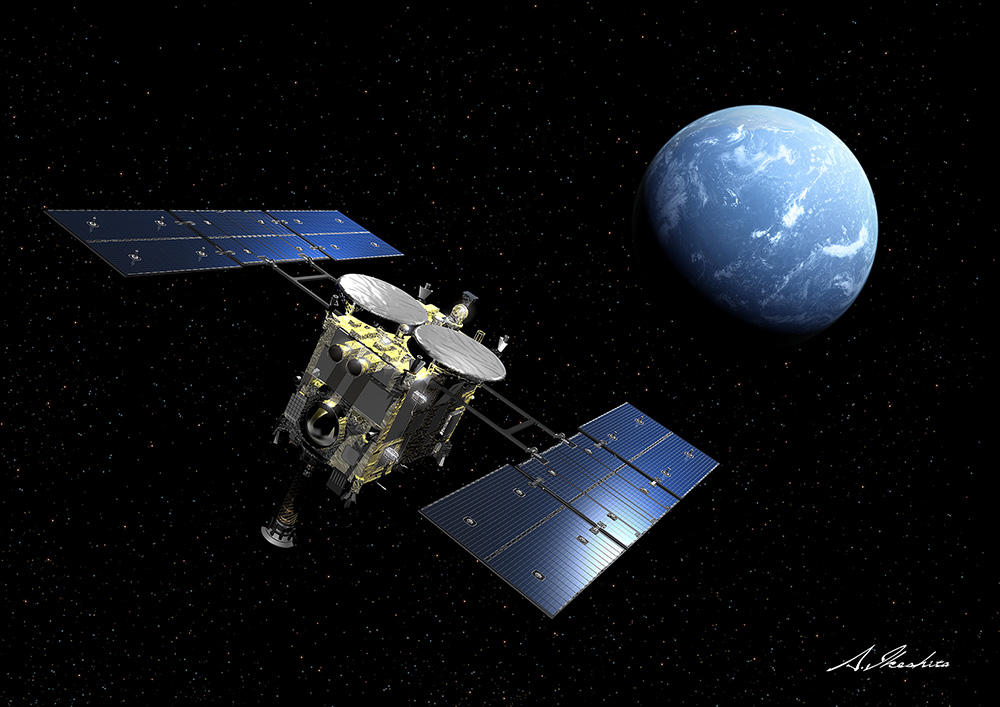
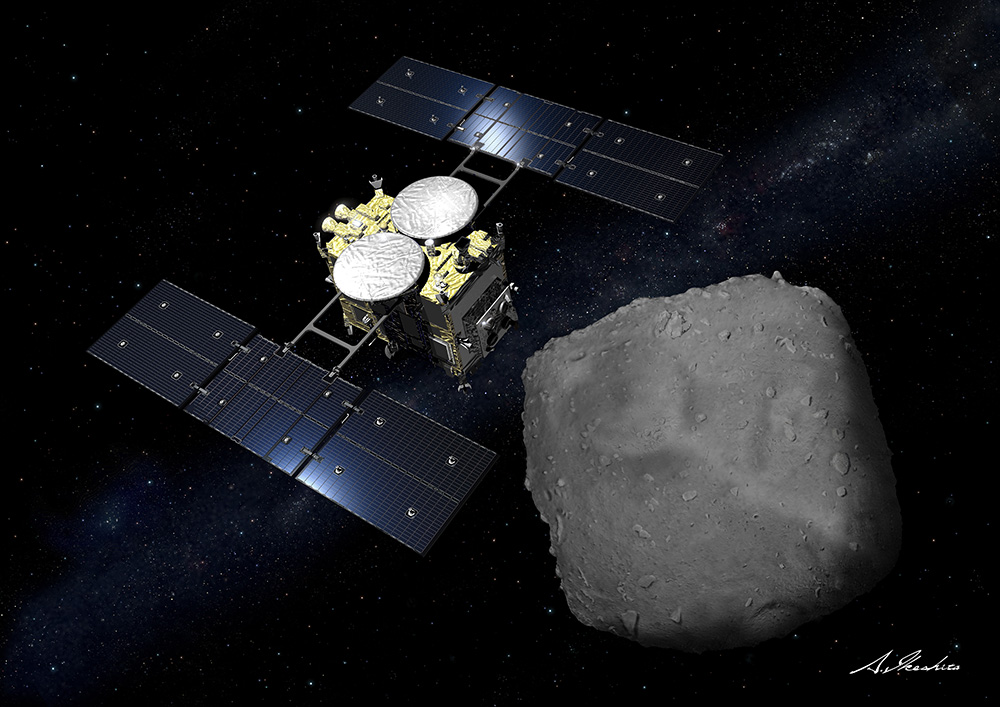
Ryugu is an asteroid located between Earth and Mars. It is about 900 meters in diameter, black in color, and it orbits the Sun once every 1.3 years.
It was originally thought to be spherical, but the exploration of Hayabusa2 has revealed that the asteroid is actually shaped like a spinning top. It consists of a mass of rocks and features a hollow about 300 meters in diameter.
Ryugu was chosen as the destination of Hayabusa2 because it is a C-type asteroid, unlike Itokawa (an S-type asteroid), the asteroid explored by Hayabusa. C-type asteroids are considered to be celestial bodies that still retain water, carbon, and other organic materials from the time of the solar system’s birth about 4.6 billion years ago. Analysis of Ryugu is expected to yield important insights into the origins of the solar system and the beginnings of life on Earth.
Ryugu was discovered by a U.S. project on May 10, 1999. At the time, it was given the provisional designation “1999 JU3,” but in September 2015 it was named “Ryugu” by the Japan Aerospace Exploration Agency (JAXA) after a public naming contest. The name is taken from the folk tale Urashima Taro, in which the title character ventures far away to a “Dragon’s Palace (Ryugu-jo)” at the bottom of the sea, where he meets a princess, Otohime, and finally returns to land with a casket. Hayabusa2 brought back approximately 5.4 g of sand and stones from Ryugu; far more than the project’s target of 100 mg. What will the casket from Ryugu reveal?
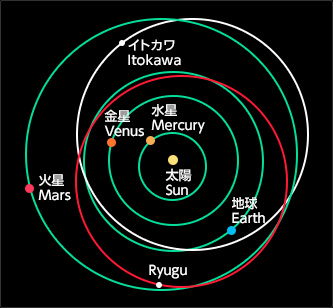
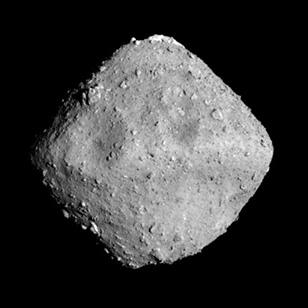
Hayabusa2 has successfully completed its mission to bring back samples from the unexplored C-type asteroid Ryugu. However, we are working now on another critical mission to investigate the origins of the solar system and life on Earth by analyzing the samples collected from the C-type asteroid. In June 2021, a total of 269 scientists from 14 different countries started the initial analysis of samples. Over a period of about one year, six teams are working on the initial analysis (Chemical Analysis Team, Stone Material Analysis Team, Sand Material Analysis Team, Volatile Component Analysis Team, Solid Organic Matter Analysis Team, and Soluble Organic Matter Analysis Team).
The Chemical Analysis Team, which HORIBA is a part of, is made up of around 50 scientists from six countries, including the USA and France, who collaborate on the task of investigating the chemical characteristics of Ryugu.
Using X-ray fluorescence microscopes and isotope microscopes,* the team seeks to identify the chemical elements in the Ryugu samples, and determines their relative proportions, as well as learns about the environment in which they were formed. Using these findings, they also try to figure out the relationship between the asteroid Ryugu and the types of meteorites that have fallen to the Earth, to look into Ryugu’s origin.
* Isotope microscope: A microscope capable of observing the quantity and mass of microscopic isotopes (atoms having the same atomic number but different mass numbers) in a material.
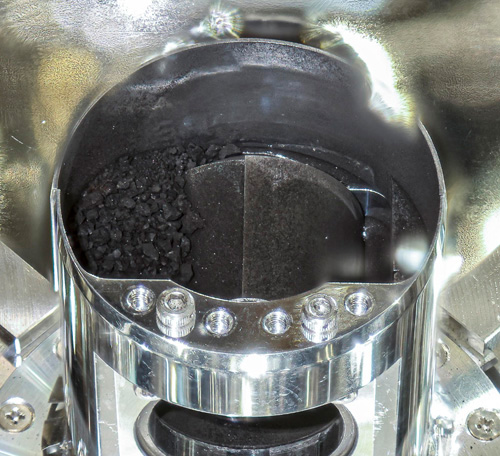
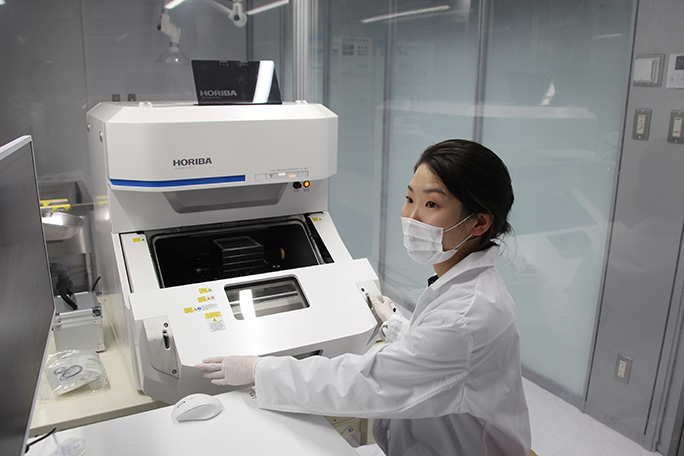
Providing high-precision non-destructive and non-contact analysis as a “starting runner” of the Chemical Analysis Team
HORIBA is part of the Chemical Analysis Team, which includes about 50 analysis specialists from around the world. The Chemical Analysis Team’s first challenge is to conduct a non-destructive, non-contact analysis using our X-ray fluorescence analyzer and Raman spectroscope.
Our mission is to uncover basic information about samples, such as the type and quantity of elements and their chemical properties, and to securely “pass the baton” to the next step in the marathon of analysis, without contaminating samples.